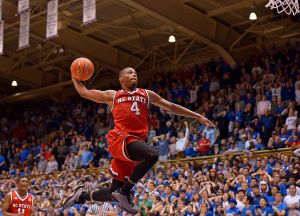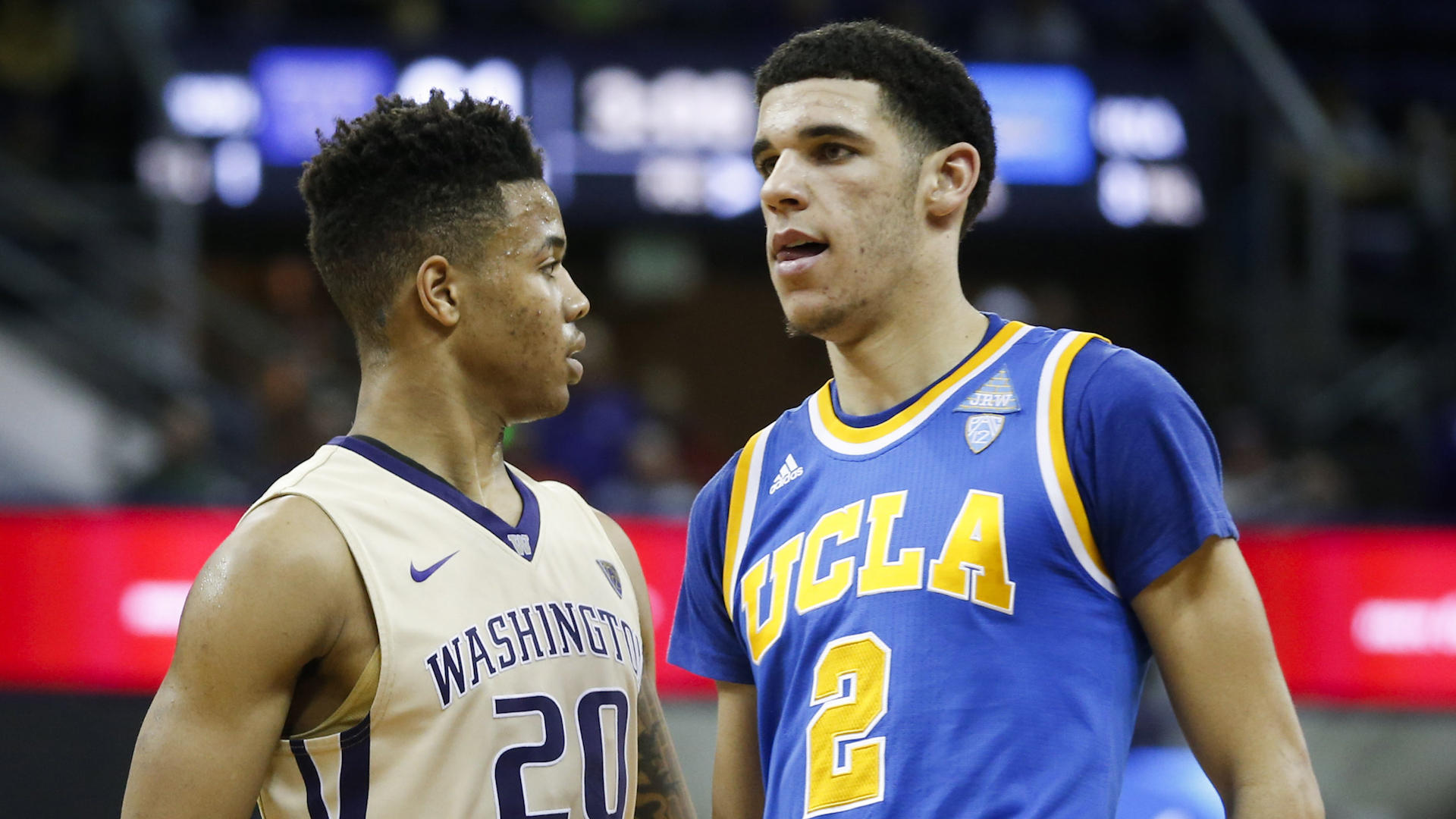The NBA Draft used to be my favorite event of the non-sports sports calendar. Maybe it still is, but my interest in the draft has been reduced over the years. Part of the reason is the unending hype cycle that is clearly nonsense. Every year a handful of players are considered transformational. There has not been a superstar in the last five years. Even Anthony Davis, as good as he is, does not appear to be able to lift his team as a contender. That is likely an unfair thing to say about young players, but that doesn’t stop the unending talk about how great these young players are. This year is no different.
While I wasn’t sure if I was going to write up a mock draft because it seems like the draft has been covered by every conceivable angle, I have not read a draft that projected the potential floors for each player. Allow me be to the person who pans every pick and examines why it won’t work out. Last year, I wrote about each player’s bust potential. This year, I will be even crankier and examine a future in which this is like the 2013 draft in which the top nine players have not been named to an All-Star team. Granted, that draft produced Giannis Antetokounmpo and Rudy Gobert, but will always be known as the Anthony Bennett draft.
- Philadelphia 76ers – Markelle Fultz, guard, Washington Huskies
I like the trade between the Celtics and 76ers for both teams. There is a reasonable chance that the third pick is as good as the first, but Fultz fits Philadelphia better. As I wrote earlier this spring, we shouldn’t necessarily look at Fultz’s inability to get his team into the NCAA Tournament as a red flag. However, the fact that the Huskies weren’t really competitive in Pac-12 play is an issue. If he joins the 76ers, we should probably expect him to miss most of his first year with some sort of knee issue. The player I keep coming back to when thinking about Fultz is Ben McLemore, who has now spent four mediocre years with the Kings. The two guards had similar shooting percentages in their respective one season in college, but McLemore gained a reputation for defensive prowess and led the Jayhawks in scoring with 15.9 points. The Jayhawks won the Big 12 regular season title, of course, and advanced to the Sweet 16 before being knocked out by Trey Burke and the Michigan Wolverines. Everyone says that Fultz is the next great thing, but they also said that about so many other players. I wish there were a website or catalog of false hype surrounding players.
- Los Angeles Lakers – Lonzo Ball, guard, UCLA Bruins
The important thing about this pick is that it makes LaVar Ball happy. He takes the level of sports dad to a new place. As annoying as LaVar may be, there is no discounting his son’s court vision. He led the nation with 7.6 assists and appeared to make his Bruin teammates better. On the downside, there is that ugly looking shot that is a cross-body flick. Ball managed to hit 41.2% of his 3-pointers, but it is hard to imagine that it will be effective as a pro and he converted just 67.3% of his free throws. The 6-6 guard was not asked to play much defense while in Westwood, and will be exploited on that end with the Lakers.
- Boston Celtcs – Josh Jackson, forward, Kansas Jayhawks
The reason I like the trade for the Celtics is that I am as bullish on Jackson as any player in this draft. I think he could be an impact defender and his shot seemed to improve during the college season. He still made just 56.6 percent of his freebies and he will likely commit a lot of fouls as he learns to curb his aggressiveness. The last time I was this excited about a Jayhawk prospect, it was Julian Wright who never learned to shoot enough to stick in the NBA. At the very least, Jackson seems like a bigger Marcus Smart.
- Phoenix Suns – Jayson Tatum, forward, Duke Blue Devils
The Golden State Warriors showed that a team with offensively leaning players can win a championship. Draymond Green, Klay Thompson, and even Kevin Durant are all excellent defenders as well. Tatum showed in his lone season as a Blue Devil that he can put the ball in the basket. He did most of his damage from the mid-range, but hit 84.9% of his free throws. The forward should be able to extend his range to 3-point range, but he only hit 34.2% of his 3-pointers with Duke. The question for the Suns is whether Tatum is better than T.J. Warren. I don’t have an answer for that. The Suns could well go for Jonathan Isaac who has higher upside as a two-way player, but Tatum projects as a better scorer.
- Sacramento Kings – Dennis Smith, guard, North Carolina State Wolfpack

This point guard heavy draft is perfect for the Kings, who should get their field marshal for the future. Many people prefer De’Aaron Fox after his excellent performance against Lonzo Ball in the NCAA tournament. Fox can’t shoot. Smith can: he hit 35.9% of his 3-pointers and 45.5% from the field overall as the Wolfpack won twice as many ACC games as Fultz’s Huskies won in Pac-12 play. If Smith hadn’t torn his ACL in high school, I think he would be regarded as a similar prospect as Fultz. He may be a better lead guard, but there is the issue of the knee injury as well as a lack of focus on defense.
- Orlando Magic – Malik Monk, guard, Kentucky Wildcats
The Magic have tried to fit Evan Fournier and Mario Hezonja as its shooting guard. While Elfrid Payton and his inability to hit shots may not be the long-term answer at point guard, his ability to defend would be a help next to Monk. We know that the former Wildcat one-and-doner can hit 3-pointers in torrents. Monk is also very athletic and could defend taller players. He is undersized and did not show much in the way of playmaking (except for himself) next to Fox. Monk’s best role may be as a second-team scorer, which is generally not what teams are looking for with a top 10 pick.
- Minnesota Timberwolves – Jonathan Isaac, forward, Florida State Seminoles
I have written before about thin players and Isaac certainly qualifies. At 6-10, 210 lbs, he doesn’t look like he will be able to fill out too much, but he projects as an interesting player who can block shots and hit 3-pointers. There is a bit of Anthony Randolph to his game. He was not a primary offensive option with the Seminoles and would be looked at as another project with the Timberwolves. Eventually, he could supplant Gorgui Dieng, but he could also be a swing and a miss like players such as Noah Vonleh or Jan Vesely.
- New York Knicks – Frank Ntilikina, guard, France
If Ntilikina falls somewhere between Antetokounmpo and Nikoloz Tskitishvili (just to pick a couple of names at random), the Knicks would be happy. NBADraft.net compares the 6-5 guard to Dante Exum, who was a mysterious player who has not found a role in the NBA after injuring his knee early in his career. Like Isaac, Ntilikina is thin and he would have to prove to be able to run Phil Jackson’s vaunted triangle offense. It’s too early to call Exum a bust, but the French guard would need to hit better than the 30.8% from 3-point range that the Australian has converted in his first two seasons.
- Dallas Mavericks – Luke Kennard, guard, Duke Blue Devils
It was a surprise that Kennard was the lead scorer for the Blue Devils this past season. As a freshman, he converted just 31.8% of his 3-pointers, but nailed 43.8% of his long-range shots as a sophomore. He played with a contained fire, unlike Grayson Allen. It remains to be seen if Kennard can bring anything besides shooting at the next level. He showed more perimeter skills than his teammate, Tatum, but was not as crafty around the basket. Kennard is taller than a one-dimensional lottery pick like Jimmer Fredette, but he might find himself in a Anthony Morrow-like role.
- Sacramento Kings – John Collins, forward, Wake Forest Blue Devils

In terms of this mock draft, Vlade Divac loves the ACC. He did play in Charlotte for a couple of seasons after getting traded for Kobe Bryant, so maybe he set down some scouting roots to take two ACC players with his two lottery picks. Collins is low-post player who put up big numbers (19.2 points, 9.8 rebounds) for a lower-tier ACC team. Unlike Smith and Fultz, Collins propelled his team into the Big Dance, where they lost in the first round to Kansas State. The Kings already have young bigs in Willie Cauley-Stein and Skal Labissiere (so Bam Adebayo would make some sense), but Collins has more polish in the paint. There isn’t much of a possibility of such a limited player becoming better than a reserve.
- Charlotte Hornets – T.J. Leaf, forward, UCLA Bruins
I seem to be higher on Leaf than most people who may think that he is simply a product of Lonzo Ball’s genius. Ball did not hit 46.6% of his 3-pointers, but Leaf did in limited attempts. The 6-10 forward hit 61.7% of his shots overall and led the Bruins with 16.3 points. The Hornets already have Cody Zeller and Frank Kaminsky. Neither former Big 10 forward has distinguished himself early in his career, and Leaf could fall into the Charlotte forward abyss.
- Detroit Pistons – Lauri Markkanen, forward, Arizona Wildcats
When Stan Van Gundry dreams, does he think back to the 2009 Orlando Magic that had Dwight Howard surrounded by shooters? Markkanen could be this decade’s Ryan Anderson who was just 21 years old when he started with Orlando. The Finnish seven-footer connected on 42.3% of his 3-pointers, but slowed down on offense when Alonzo Trier returned. Despite his size, he is not a rim protector and his rebounding (7.2 per game) was not fantastic. He could still be Anderson, but probably not.
- Denver Nuggets – Terrence Ferguson, guard, Australia
Ferguson is another international man of mystery, like Leigh Ellis. The 6-7 guard has not played against top competition while in Australia. He is another thin player who can be pushed around by opponents. Like Isaac and Ntilikina, Ferguson is young and could fill out as he matures. He is supposed to be a decent long-range shooter. The Nuggets have had limited success with Emmanuel Mudiay, who also did not play college ball, and could be willing to go the same route. Ferguson could be a swing for the fences, but could come up with hot air.
- Miami Heat – Zach Collins, forward, Gonzaga Bulldogs
A quick scan of Collins’s numbers at Gonzaga does not reveal much. He averaged 10.0 points in 17.3 minutes as a reserve. The 7-0 forward had troubles with fouls in the Final Four. The ultimate compliment is that he resembles Kevin McHale around the basket. His 47.6% from 3-point land may excite people, but he only attempted 21 long-range shots. Collins looks like he could fill out and be a space eater in the paint. He also blocked 1.8 shots, but some of that defensive aggressiveness would need to be curbed if he is to remain on the court. Collins did not play more than 23 minutes in any game because the Zags had such a deep frontcourt, but that should be cause for at least a little concern.
Add The Sports Daily to your Google News Feed!
